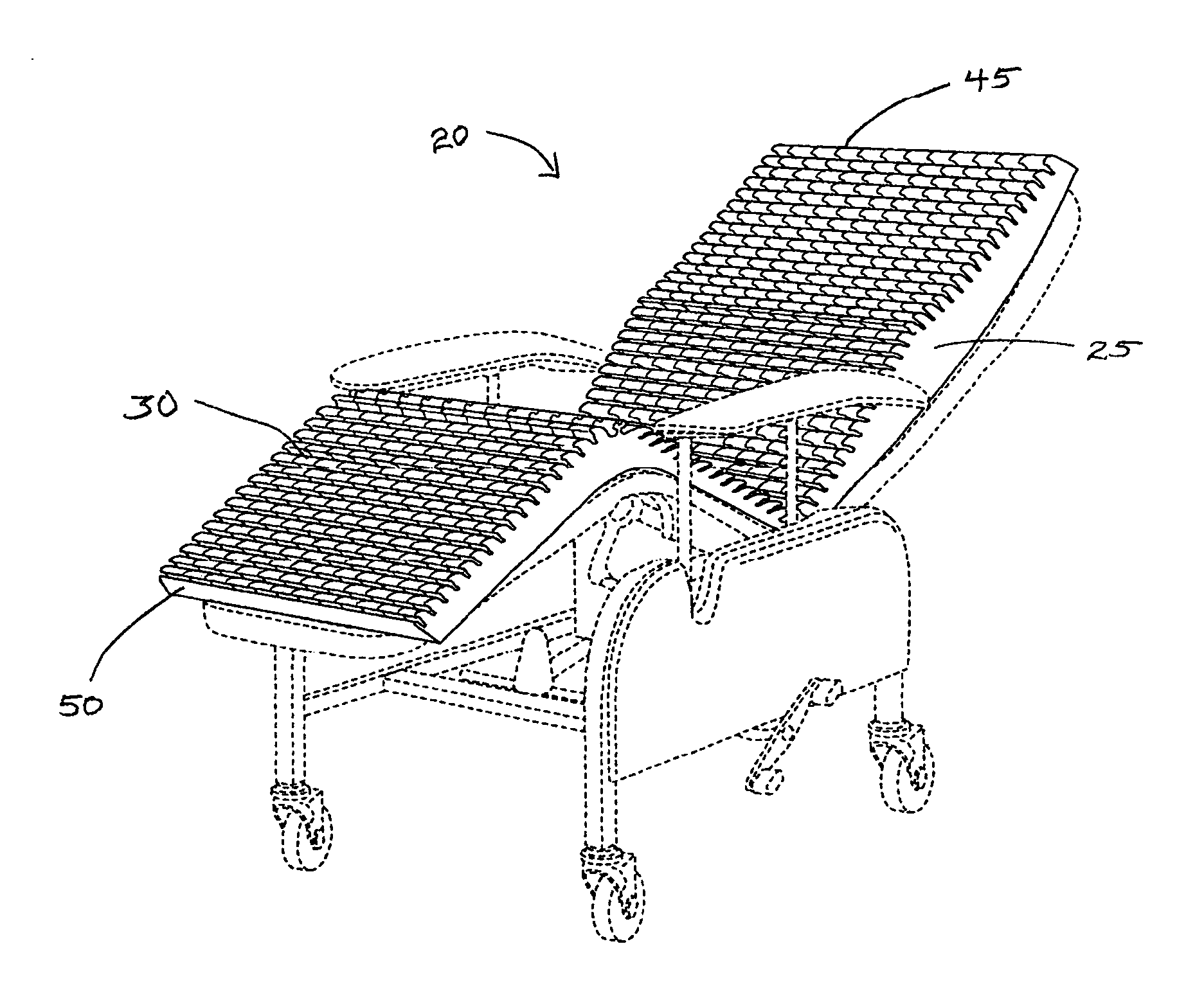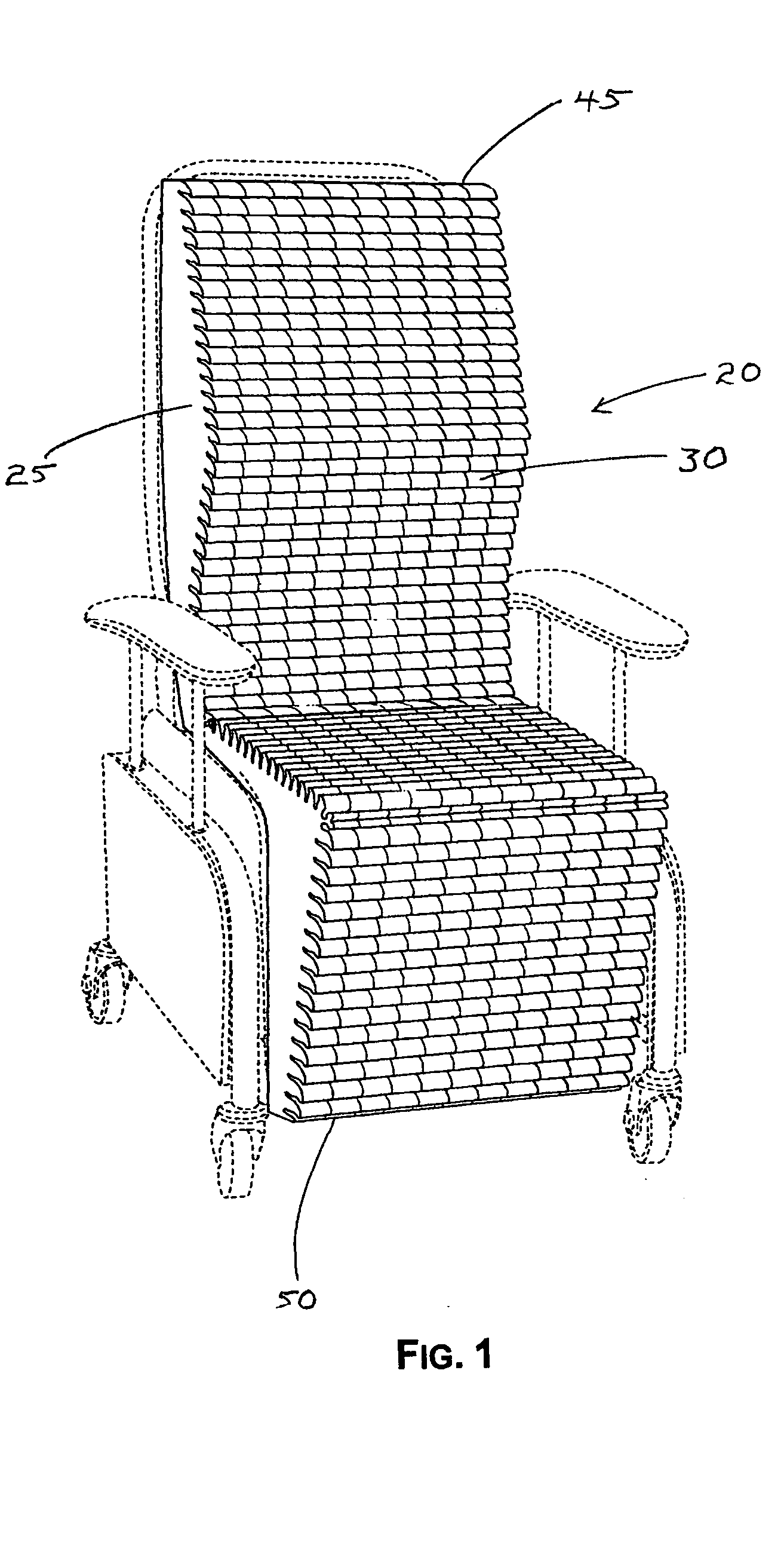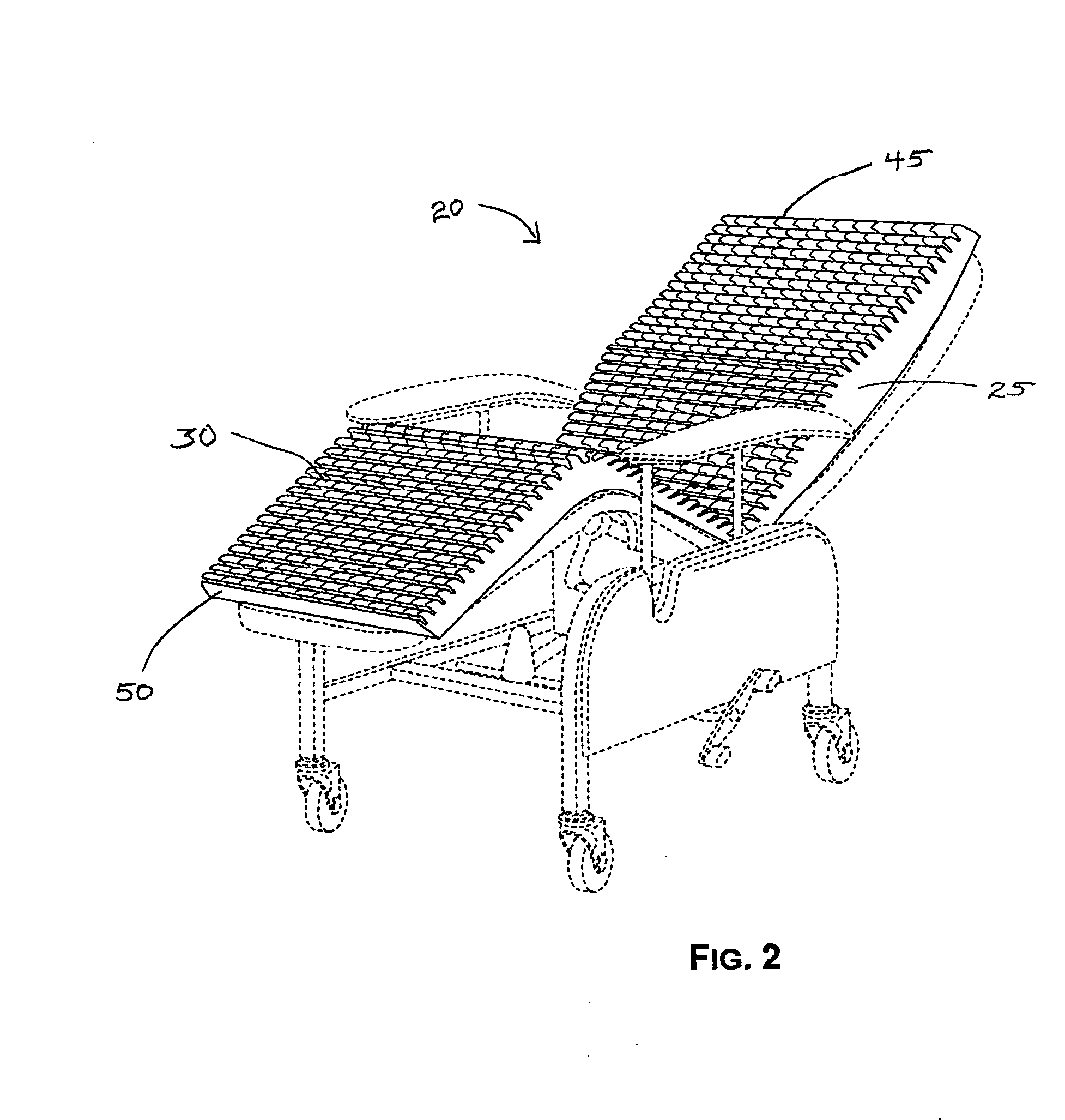Shear reducing chair cushion
a chair cushion and shear-reducing technology, applied in the field of chair cushions, can solve the problems of reduced skin integrity, reduced circulation, impaired nutrition, etc., and achieve the effects of reducing shear stress on the body, uniform thickness, and optimally receiving different portions
- Summary
- Abstract
- Description
- Claims
- Application Information
AI Technical Summary
Benefits of technology
Problems solved by technology
Method used
Image
Examples
Embodiment Construction
[0023] Reference will now be made in detail to the presently preferred embodiments to the invention, one or more examples of which are illustrated in the drawings. Each example is provided by way of explanation of the invention, and not meant as a limitation of the invention. For example, features illustrated or described as part of one embodiment may be used on another embodiment to yield a still further embodiment. It is intended that the present application includes such modifications and variations as come within the scope and spirit of the invention. The same numerals are used to refer to the same features throughout the drawings and in the text that follows.
[0024] Referring to the Figures, a chair cushion generally 20 includes a main body 25 comprised of a resilient material, for example polyurethane foam. The chair cushion 20 is generally rectangular. As described herein, a “chair cushion” may be understood to be of any predetermined thickness; in the appended drawings, a th...
PUM
| Property | Measurement | Unit |
|---|---|---|
| Length | aaaaa | aaaaa |
| Distance | aaaaa | aaaaa |
| Shear stress | aaaaa | aaaaa |
Abstract
Description
Claims
Application Information
 Login to View More
Login to View More - R&D
- Intellectual Property
- Life Sciences
- Materials
- Tech Scout
- Unparalleled Data Quality
- Higher Quality Content
- 60% Fewer Hallucinations
Browse by: Latest US Patents, China's latest patents, Technical Efficacy Thesaurus, Application Domain, Technology Topic, Popular Technical Reports.
© 2025 PatSnap. All rights reserved.Legal|Privacy policy|Modern Slavery Act Transparency Statement|Sitemap|About US| Contact US: help@patsnap.com



